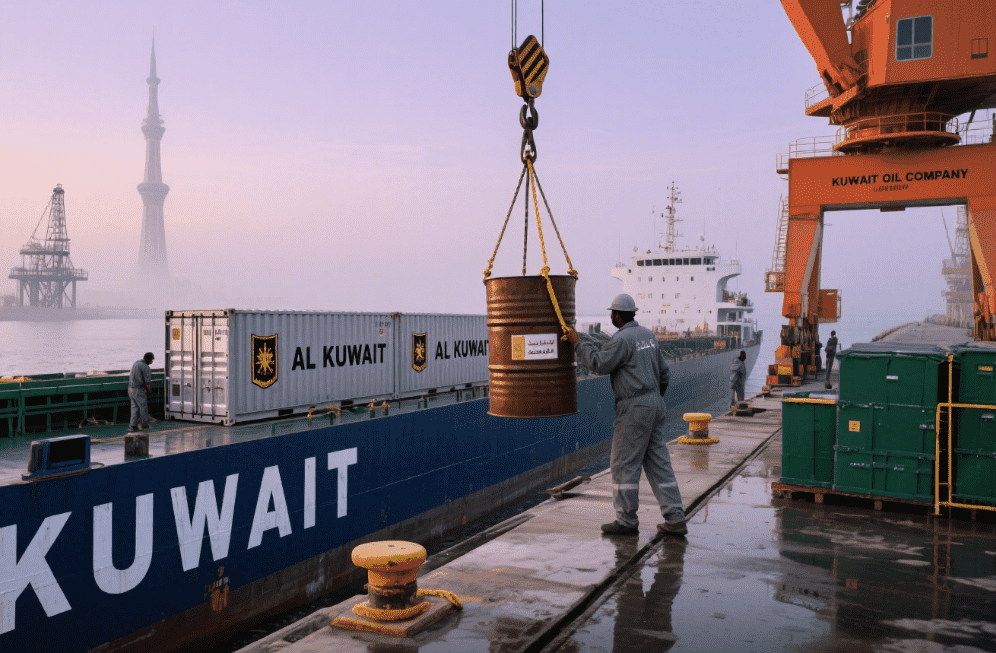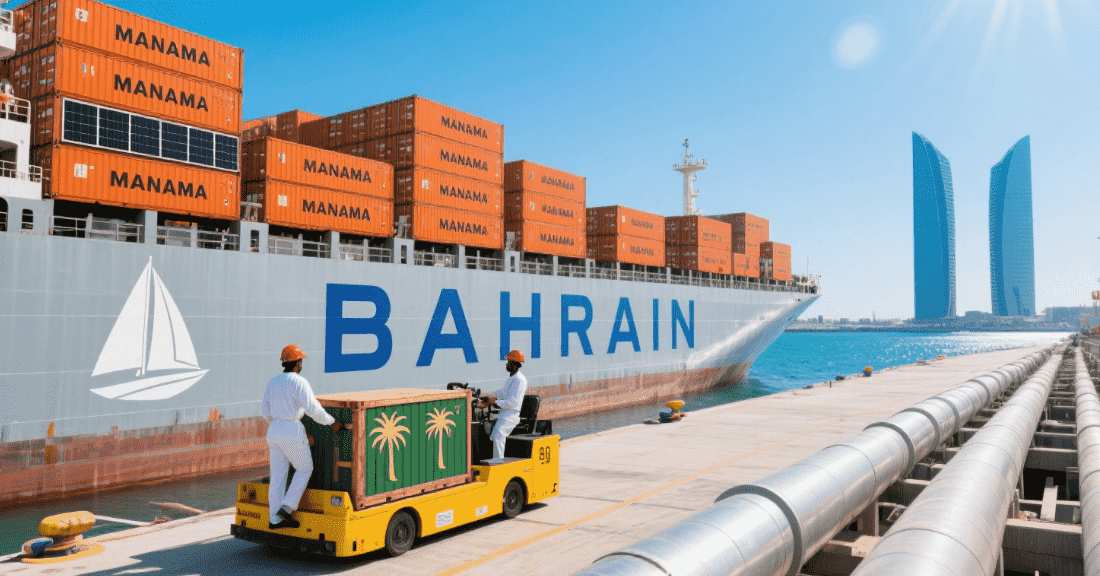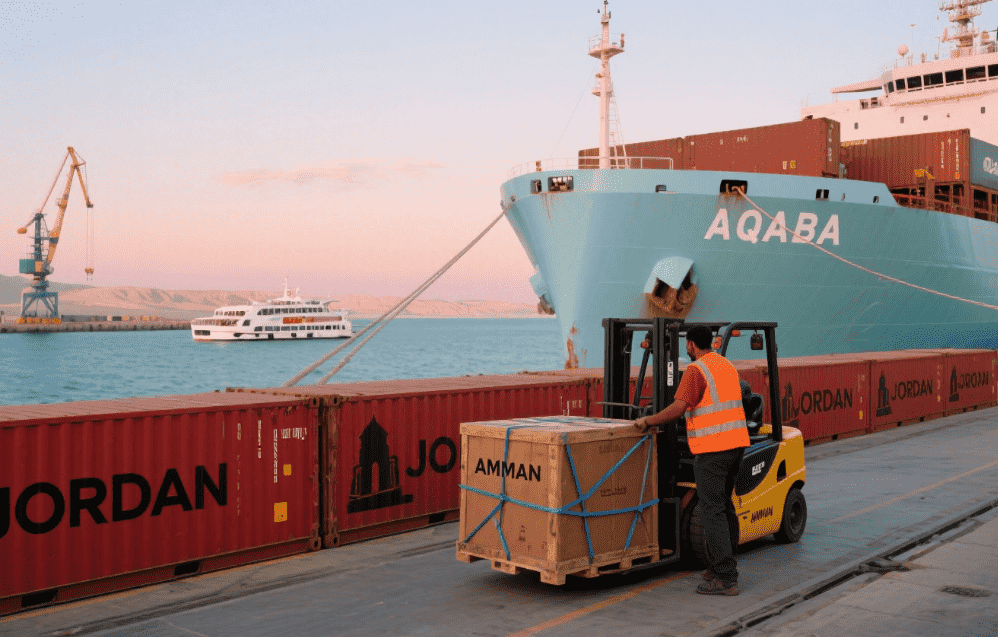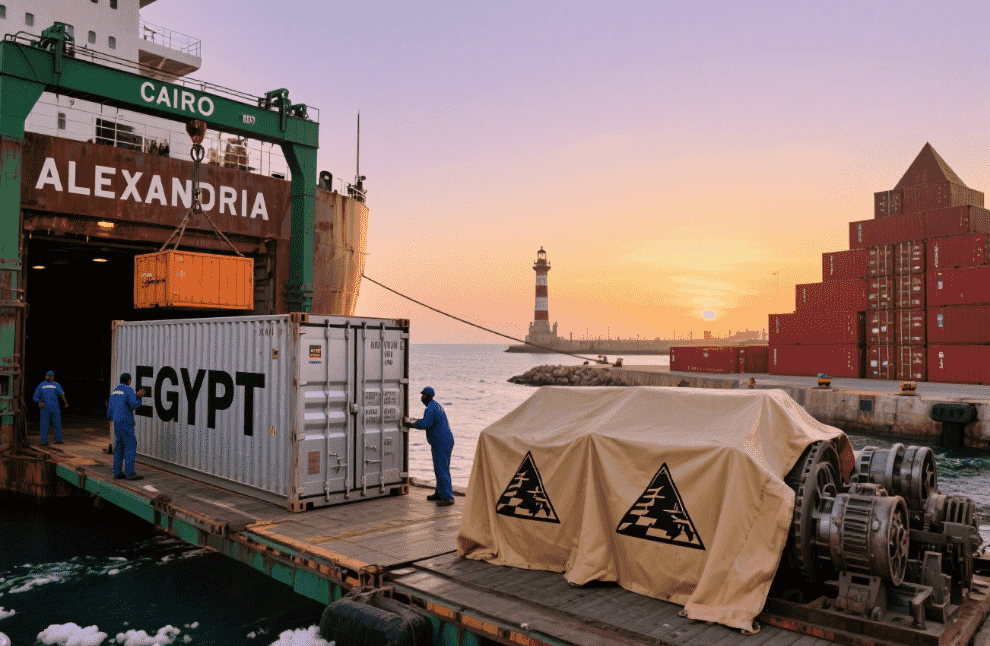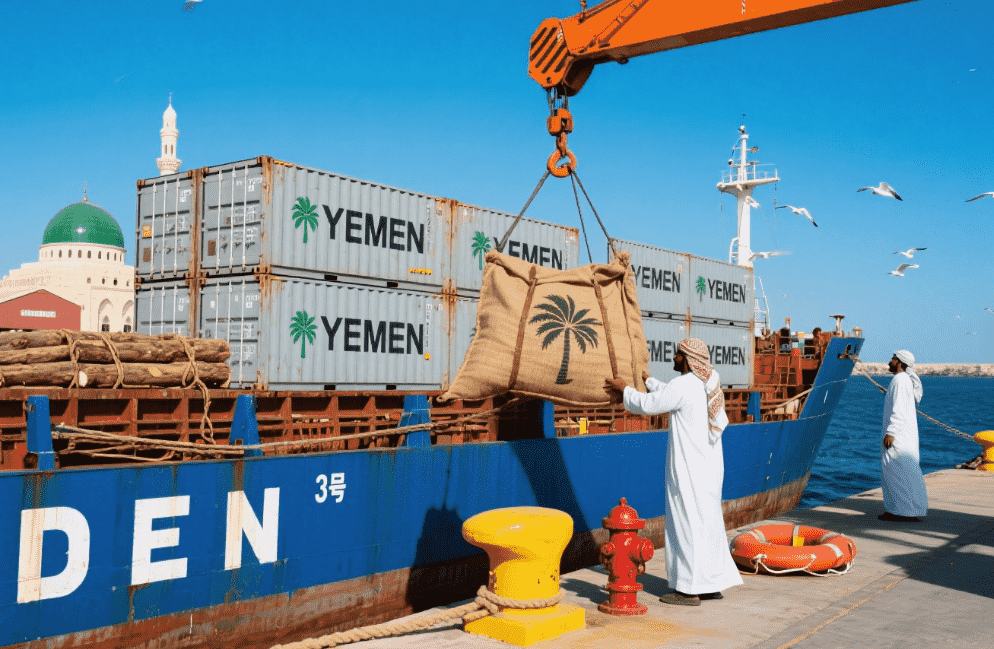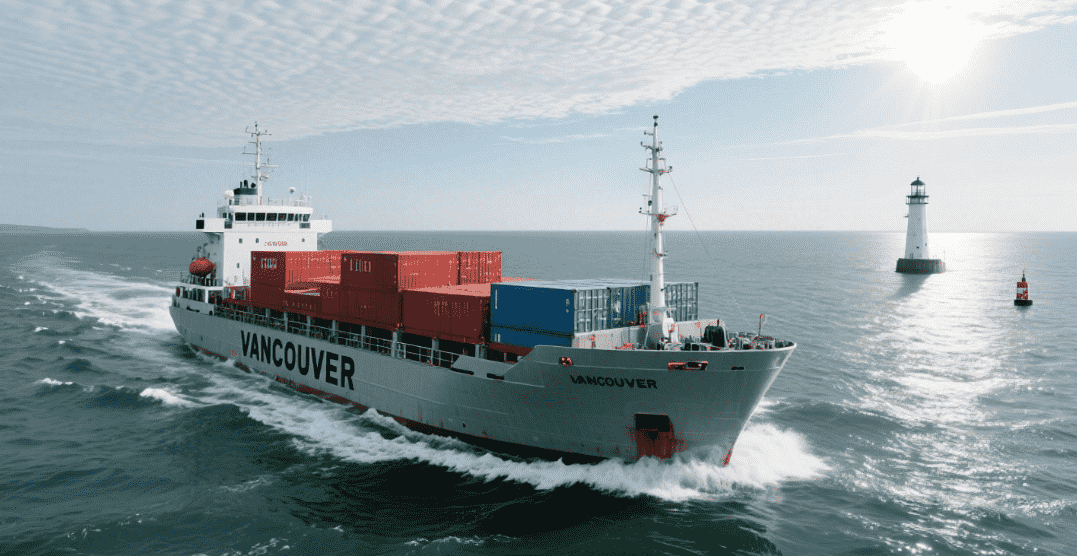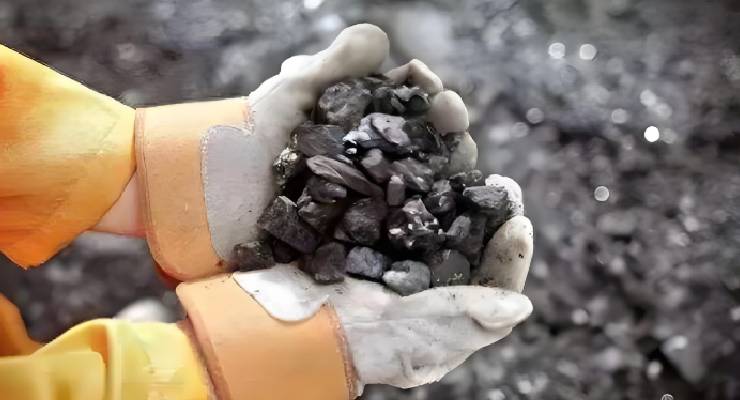
Explore the intricate world of transporting metals and minerals, where raw materials cross oceans and continents to power industry and innovation. This guide delves into the implications, challenges, and solutions that shape this important aspect of global trade. Join us on a journey to uncover the complexity of the elements of transport that make up our modern world.
Reliable freight forwarders can play an important role when transporting metals and minerals. At Winsail, we specialize in delivering efficient, safe and compliant freight solutions to meet your needs. From bulk shipping to container shipping, we provide you with full service. Let us solve complex problems for you so you can focus on your core business. Contact us today to experience Winsail's seamless shipping service!
Understand the importance of transporting metals and minerals
Metals and minerals are the foundation of modern society and are essential raw materials for industries such as construction, manufacturing, technology and energy production. The increasing global demand for these resources necessitates a robust and efficient shipping infrastructure to facilitate the transportation of these resources over long distances.
The transportation of metals and minerals is an important part of the global supply chain, connecting resource-rich regions with production and consumption centers around the world. Metals such as iron, aluminum and copper are the foundation of infrastructure, machinery and electronics, while minerals such as coal and rare earth elements are essential for energy production and advanced technologies. The seamless transportation of these materials ensures the continuous flow of resources, laying the foundation for economic growth and technological progress.
Challenges and considerations for the shipping industry
While the importance of transporting metals and minerals is clear, the entire process from mining to consumption is fraught with challenges and considerations. Several factors contribute to the complexity of this process:
Regulatory compliance and documentation: The international nature of shipping requires compliance with a range of regulations, from security protocols to customs requirements. Accurate documentation and compliance are essential to avoid delays, fines and legal disputes.
Packaging and handling requirements: Different metals and minerals have unique properties that require specific packaging and handling techniques. Some materials are corrosive, flammable or sensitive to humidity and temperature changes and require careful packaging to prevent damage or contamination during transportation.
Environmental concerns: The mining, processing and transportation of metals and minerals have environmental impacts, including habitat destruction, water pollution and carbon emissions. Balancing economic needs with sustainable practices is an ongoing challenge.
Supply chain disruptions: Geopolitical tensions, natural disasters, labor strikes, and other unexpected events can disrupt supply chains, leading to delays and shortages of metals and minerals.
Logistical complexity: Transporting metals and minerals often involves multiple modes of transport, transit and intermediate storage points. Coordinating these processes requires efficient logistics management.
Safety and security: When transporting valuable and sometimes dangerous goods, ensuring the safety of workers, the integrity of the goods and preventing theft or piracy are primary concerns.
By understanding the complexities of transporting metals and minerals, stakeholders in the industry can more effectively navigate the complexities and contribute to a seamless global supply chain.
Learn about metals and minerals
Delving into the transportation world of metals and minerals requires a basic understanding of the materials themselves. In this section, we will explore the various metals and minerals that are transported globally and provide an overview of the market dynamics and demand that drive this important aspect of international trade.
Types of metals and minerals transported
There are a wide variety of metals and minerals, each suitable for different industries and applications. From industrial giants to specialty parts, here are some of the major types of metals and minerals that are frequently transported:
Base metals: including copper, zinc and aluminum, they form the backbone of industrial processes ranging from construction and manufacturing to power infrastructure.
Precious metals: Gold, silver, platinum, and palladium have monetary and industrial value and often play a role in jewelry, electronics, and investments.
Iron ore: Iron ore is an essential ingredient in steel production and is transported in huge quantities to meet global infrastructure and manufacturing needs.
Coal and minerals: Coal and minerals (such as limestone, phosphate and sulfur) are essential for energy production and industrial processes, and they are transported to power plants and production sites.
Rare earth elements: These elements are essential for advanced technologies such as electronics and renewable energy systems, driving the demand for efficient shipping solutions.
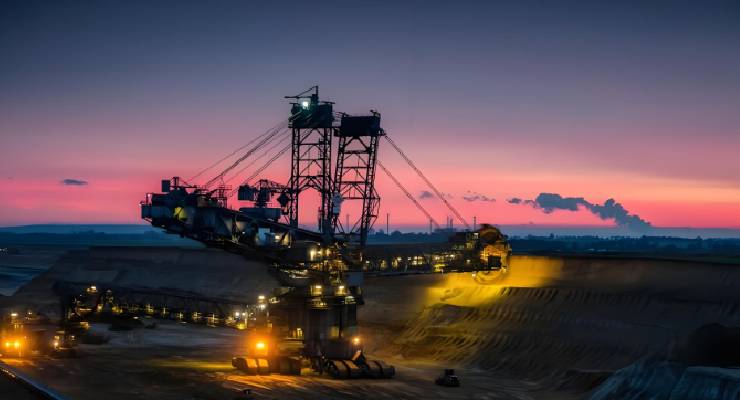
Market overview and demand
Understanding economic dynamics and demand patterns is critical to understanding the transportation outlook for metals and minerals:
Global supply and demand: Economic growth and changes in industrial activity affect the demand for metals and minerals. Developing economies, in particular, are driving demand for raw materials.
Infrastructure development: As countries invest in infrastructure projects, the demand for building materials such as steel and cement increases, thus affecting shipping patterns.
Technological advances: The rise of electric vehicles, renewable energy and high-tech industries has boosted demand for certain metals such as lithium, cobalt and rare earth elements.
Commodity markets: Fluctuations in metal prices in commodity markets affect production and transportation decisions, as higher prices tend to drive increased mining and export activity.
Environmental considerations: Growing awareness of sustainability and responsible sourcing affects the demand for metals and minerals that are mined and transported with minimal environmental impact.
In essence, understanding the nuances of metal and mineral species and their demand dynamics can lay the foundation for developing effective transportation strategies. This understanding guides logistics planning, risk assessment and the development of solutions that meet the unique needs of each material.
Ready for delivery
Before metals and minerals embark on their journey across global supply chains, meticulous preparation is essential. This section will delve into two key aspects of this preparation: regulatory compliance and documentation, and packaging and handling requirements.
Regulatory compliance and documentation
Navigating intricate international shipping regulations and customs procedures is a fundamental prerequisite for the successful transportation of metals and minerals. Failure to comply with these regulations can result in delays, fines, and even confiscation of goods. Key considerations in this regard include:
Customs documentation: Accurate and complete documentation is essential. This includes bills of lading, certificates of origin, commercial invoices, packing lists, and any required permits or licenses. Failure to comply may result in delays in customs clearance or rejection of goods.
Dangerous Goods Regulations: Many metals and minerals fall into the dangerous goods category due to their properties. Proper classification, packaging, labelling and record-keeping are essential to ensure the safety of transport workers, the environment and other goods.
International Trade Agreements: Understanding trade agreements and tariffs between countries is crucial. Using preferential trade agreements can reduce costs and streamline customs processes.
Sanctions and embargoes: Compliance with sanctions imposed by international bodies or individual countries is essential to avoid legal disputes and reputational damage.
Insurance requirements: Adequate cargo insurance is a safety guarantee against accidents during transportation. There are different types of insurance available to cover various risks.
Packaging and handling requirements
The safe transport of metals and minerals depends on proper packaging and handling methods. The weight, fragility and chemical properties of these materials often vary greatly, so careful consideration of packaging methods and transport conditions is required:
Corrosion protection: Easily corroded metals must be protected from exposure to moisture and air. Properly sealed packaging and the use of desiccant can help reduce the risk.
Fragile minerals: Fragile minerals require shock-absorbing packaging to prevent breakage during transport. Cushioning materials such as foam, bubble wrap or padding are essential.
Temperature control: Some minerals are sensitive to temperature fluctuations. Insulated packaging and temperature monitoring systems are critical to maintaining product integrity.
Bulk cargo: Bulk transport is a common mode of transport for minerals such as coal and ore. Proper loading, fixing and stowage techniques must be used to prevent displacement during transport.
Labels and markings: Clear labels indicating contents, handling instructions, and hazard warnings help with proper handling and reduce the risk of improper handling.
Weight distribution: Proper weight distribution within the container is essential to maintain stability and prevent damage to the container and cargo.
By strictly adhering to regulatory standards, ensuring accurate documentation, and employing appropriate packaging and handling techniques, shippers can minimize risk and improve operational efficiency. In the following sections, we will explore the various modes of transport that can be used to transport metals and minerals, each with its own unique requirements and considerations.
Mode of transportation
When transporting metals and minerals, choosing the right mode of transport is a key decision. The choice depends on factors such as the type of goods, distance, urgency and cost considerations. This section explores in depth the three main modes of transport: sea, air and land.
Maritime: bulk carriers and container ships
Maritime transport remains the cornerstone of global trade, especially for the transport of large quantities of metals and minerals. Two popular modes of shipping are bulk carriers and container ships:
Bulk carriers: These specialized vessels are used to transport large quantities of unpackaged materials, such as ore, coal, and grain. There are different types of bulk carriers, including dry bulk carriers used to transport solid materials and liquid bulk carriers used to transport liquids such as oil. These ships can efficiently transport large volumes of cargo at a lower cost, but they lack the versatility of container shipping.
Container ships: Containerization has revolutionized the shipping industry. Metals and minerals can be packed into standard containers, ensuring easy handling, efficient handling and protection from outside influences. This method is suitable for small batches, high-value items and materials that require special handling.
Air freight: considerations and benefits
Fast and efficient air transport makes it ideal for transporting time-sensitive or high-value metals and minerals. Although the cost is higher compared to sea freight, air freight has several advantages:
Speed: Air freight greatly reduces transit time and is suitable for emergency shipments or items with a short shelf life.
Global reach: The airport covers an extensive network and can transport metals and minerals to remote areas that cannot be reached by other means.
Reduced risk of damage: Air freight usually passes through fewer handling points, which reduces the likelihood of damage.
Temperature control: Specialized air freight containers can provide a temperature-controlled environment that is critical for sensitive minerals.
Security: The airport has strict security measures to reduce the risk of theft and damage during transportation.
Land transport: truck and rail
Land transport plays a key role in connecting seaports, airports and final destinations. Trucks and railways are the main modes of overland transport of metals and minerals:
Trucks: Trucks have the flexibility to reach locations that larger vehicles cannot. They are suitable for transporting smaller quantities and shorter distances. Carefully planned routes, properly secured cargo and compliance with road regulations are critical to the success of trucking.
Rail: Rail transport can efficiently transport large quantities of metals and minerals over long distances. Railways are especially advantageous in connecting production sites with ports or inland distribution centers. Proper loading, fixing and coordination are essential for safe rail transport.
Understanding the nuances of each mode of transportation allows shippers to make informed decisions that optimize their supply chain. The following sections will delve into the complexity of freight containers, specialized handling and security measures, as well as the logistics and supply chain management aspects necessary to successfully transport metals and minerals.
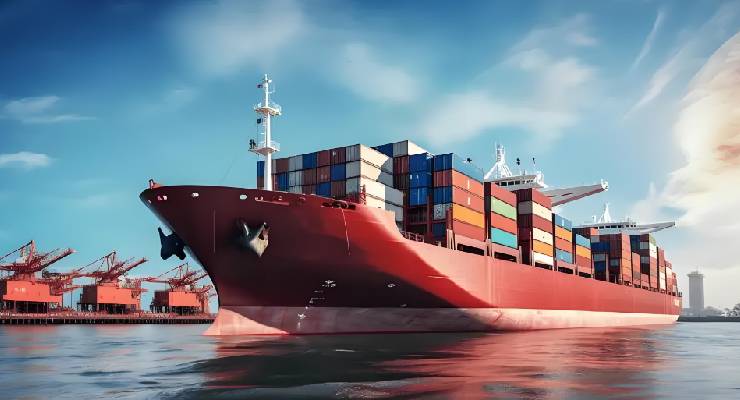
Freight containerization
Containerization has changed the way metals and minerals are transported, providing a standardized and efficient method for handling and transporting goods. This section explores the world of freight containerization, including the various types of containers used for metals and minerals and the importance of proper loading and fixing techniques.
Metal and mineral container types
Containers come in a variety of sizes and configurations to accommodate different types of cargo. When transporting metals and minerals, choosing the right container type is crucial:
Dry cargo container: This is the most common container used to transport general cargo. They are suitable for transporting non-perishable metals and minerals. Standard sizes include 20-foot and 40-foot containers.
Open top container: Suitable for oversized items or items that require top loading, such as machinery or large metal parts. The top can be removed for easy loading and unloading.
Flatbed containers: These containers have foldable sides and are suitable for transporting heavy or bulky cargo. They are often used to transport large machinery, vehicles, or metal structures.
Refrigerated containers: Suitable for minerals and metals that require temperature control, such as perishable minerals or those that are sensitive to temperature changes.
Special Purpose containers: In some cases, special purpose containers are designed to meet specific cargo requirements, such as containers that provide ventilation or humidity control.
Loading and securing cargo
Proper loading and securing of goods in containers is essential to prevent damage during transport, ensure safety and maintain the integrity of the supply chain:
Loading plan: A well thought out loading plan ensures that cargo is loaded in a balanced manner, preventing displacement during transit. Heavier items are usually placed on the bottom and lighter items on the top.
Fixed equipment: The use of proper fixed equipment (such as lashing straps, chains and belts) can prevent the movement of goods in the container. This is especially important to prevent damage during rough sea navigation.
Blocking and support: Inserting pads or supports between the cargo and the container wall helps disperse the forces generated during transportation and prevents damage from impact.
Weight distribution: Evenly distributing the weight inside the container helps maintain stability during loading, unloading and transportation. Uneven weight distribution can result in toppling or structural damage.
Cargo integrity: Proper packaging and cushioning in the container protects the cargo from impact and shock. This is especially important for fragile minerals and metals.
Container sealing: Securing containers with proper seals and locks helps prevent tampering and theft during transportation.
Effective loading and fixing not only protects the cargo, but also improves overall safety and operational efficiency. By following best practices and adhering to industry standards, shippers can ensure that metals and minerals arrive at their destination in the best possible condition.
Choose the right transportation partner
Choosing the right transportation partner is a critical decision that has a major impact on the success of the transportation of metals and minerals. Reliable and experienced freight forwarders streamline shipping processes, ensure compliance with regulations, and provide cost-effective solutions.
Factors to consider when choosing a freight forwarder
Experience and expertise: Look for freight forwarders with a proven track record in metals and minerals transportation. The experience of working with these materials equips them with the knowledge to deal effectively with the challenges.
Global network: A well-established network of agents and partners in key locations ensures seamless operations and the ability to overcome logistical obstacles.
Regulatory knowledge: Understanding of international shipping regulations, customs procedures and handling of hazardous materials is essential for successful cooperation.
Handling capacity: Confirm that the freight forwarder can meet the unique handling requirements of your cargo, such as dangerous goods or temperature-sensitive goods.
Insurance coverage: Adequate cargo insurance coverage minimizes the financial risk of accidents, damage or loss during transportation.
References and reviews: Seek references or read reviews from other customers who have shipped similar goods. This provides insight into the reliability and service quality of freight forwarders.
Communication and Customer service: Effective and responsive customer service can resolve issues, provide updated information and ensure a smooth shipping experience.
As global trade patterns continue to evolve, choosing the right transportation partner is a key step in ensuring seamless transportation of metals and minerals. By carefully evaluating factors such as experience, service, and cost, you can build a partnership that maximizes efficiency and minimizes risk.
Ready to ship in a smarter way? Let us power your cargo with expert solutions!
Explore the intricate world of transporting metals and minerals, revealing complexity, innovation and interconnectedness. From regulatory compliance to professional handling, this guide sheds light on a variety of industry challenges.
In today's evolving global economy, transformative solutions like Winsail have emerged to deliver real-time tracking and efficiency, reshaping logistics. With insight, professionals and novices alike are prepared to deal with the success and difficulties of transporting these resources.
Metals and minerals are the foundation of our world, and mastering their transportation contributes to progress. The road ahead requires knowledge, collaboration and innovation - ensuring that seamless transport can drive economic development and shape a strong and possible future.


